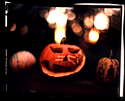er, no, it's not. Not by any means.
One is certainly more convenient than the other, and more portable. But vinyl definitely outputs better sound.
Er, certainly not in my experience.
I enjoy listening to music at my audiophile friend's house.
The machine is pretty impressive, taking an entire room. 7-ways per side, 7 amplifiers - one per way, each way has from 4 to 16 speakers (actually one way has 25 speakers each side, but this was not completed yet).
The setup at the moment has got some 150 loudspeakers. This is important for reasons which I will not dwell in for the sake of brevity. In short, this stereo setup is a jewel and sounds wonderfully.
I listen only to classical music.
Symphonic music, opera, and somehow organ music are the real test of a stereo setup. Pop music, piano music, chamber music somehow compress the difference in quality between different systems. A full orchestra playing is the real benchmark.
I don't need to descend here into a meaningless "confrontation" by words because only experience can support what I say. Maybe if you come in Rome, we can arrange a meeting.
I say: A vinyl record cannot not on earth contain all the unbelievable detail that a CD can contain, but can be extracted only by a very, very advanced system.
We are still surprised, at every improvement of the machine, at what kind of minute and previously undetected details can come out of a CD.
The theory my friend has, and I believe he is right, is that the signal coming out from a CD is too rich and "harsh" for a common set-up to be able to reproduce it faithfully. What the setup cannot manage to reproduce faithfully gets distorted. The Vinyl (and, on a similar logic, tubes) "smooth" the signal and "simplify" it for the rest of the chain. That makes it more manageable by the amplifiers and speakers, which can reproduce it adding less of their own "distortion" (take "distortion" in the broadest sense, as "unfaithfulness").
In fact, my friend and I would agree that on most hi-fi systems playing a simple (voice and piano, or small band etc.) signal, vinyl (and tubes) can actually give a better result. And we do agree that the impression people have that vinyl (tubes) is superior is actual in experience, although "wrong in theory", as the experience is a mere consequence of the inadequacy of simple setups (3 ways, one or two amplifiers, 1 loudspeaker per way per side) to reproduce the signal of a CD without stomping and coughing.
What I say is: no way those scratches on a vinyl plate, however analogic, not sampled etc. can render the complexity of the sound coming out from a symphonic orchestra to the level of near-perfection a CD can. Sampling "more" than what a CD does is moot until one has a setup able to extract all the information in a CD. I do believe my friend's setup, which is by far the better sounding one I ever heard, is probably far from that goal.
I remember listening to a monstruous setup by another audiophile. A rich one, costing like a house. It performed wonderfully with pop music, voice and accompaniment. When confronted with symphonic music (Sibelius concert for violin) it failed miserably to my ear (that was CD, and tubes).
The owner and his friends agreed with me that the orchestra sounded quite bad. Strange, they said, EMI records are usually very well made! (you heard those kind of comments if you know audiophile people!).
I and my friend came later that night at his house, played again that CD, and it was on another league. And wonderfully recorded.
Look at the grooves on a vinyl record. There is, so to speak, "no information at all". I am surprised music can come out of that.
Vinyl can sound better than CD when it matches the limitation of the setup. A CD source is "too much" for most setups. The signal is too complicated and the loudspeaker cannot follow it faithfully, resulting in distortions.
This really is a long and interesting subject, which should better be debated in front of a good stereo apparatus.
Fabrizio
PS It is a common misconception that vinyl is more faithful because it is not sampled, while CD is less faithful because it is sampled and therefore some information is lost "by design". Vinyl is a sound produced by a scratch on a plastic support. CD sampling works better.







